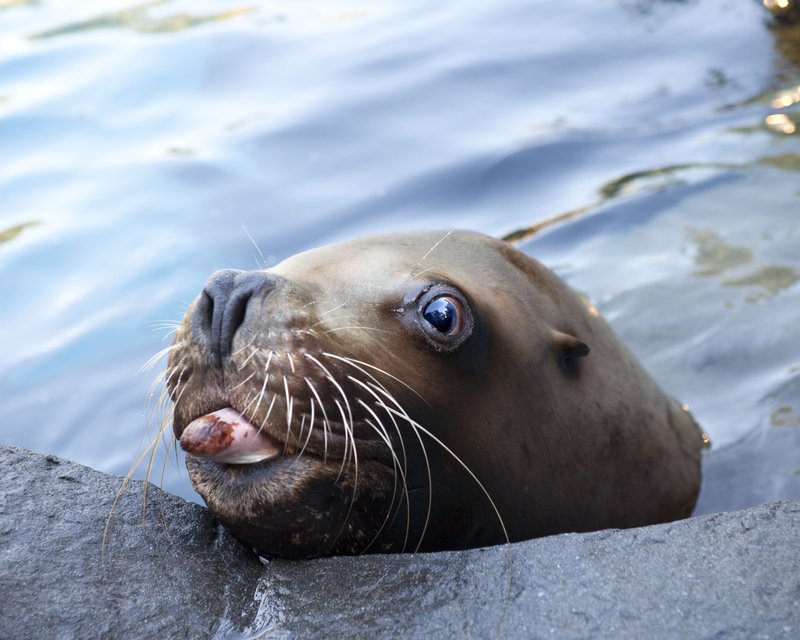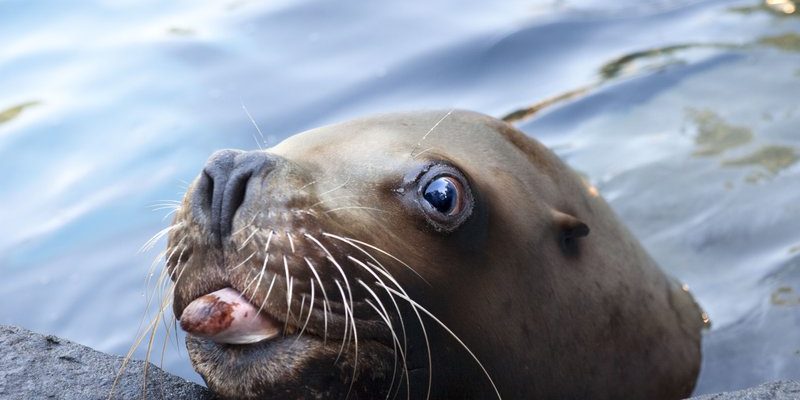
Sea lions belong to the family Otariidae, which means they’re part of the group known as earless seals. These creatures are often confused with their cousins, the seals, but they have distinct differences that set them apart. Sea lions have external ear flaps, which is one of the easiest ways to tell them apart from true seals. They’re also highly social animals, often seen in large groups, and they communicate with a range of vocalizations that include barks, growls, and even a bit of roaring. Let’s explore some amazing facts about these aquatic mammals!
1. Sea Lions Are Super Social
One of the most interesting aspects of sea lions is their social behavior. They are known for being incredibly social animals, often forming large groups called herds or pods. Imagine a bustling beach party, where everyone is having fun and interacting. That’s what a sea lion pod looks like!
Sea lions gather in large numbers for breeding, resting, and socializing. You might see them sunbathing together on rocky shores or playing in the water. Their vocalizations play a big role in their social interactions; they bark to communicate with one another, helping them maintain bonds and establish hierarchy within the group. If you’ve ever seen a colony of sea lions, you know it’s a lively scene!
2. They Can Live a Long Time
When it comes to lifespan, sea lions can surprise you. In the wild, they often live up to 16 to 20 years, but some can live even longer in captivity—sometimes into their 30s! Think about it: that’s a substantial chunk of time for such playful creatures.
The longer lifespan in captivity can be attributed to factors like regular food supply, absence of predators, and medical care. In the wild, their lifespan is affected by various challenges like hunting, pollution, and changes in the environment. Isn’t it fascinating how different their lives can be based on their surroundings?
3. Sea Lions Are Amazing Swimmers
Here’s the thing: sea lions are built for the ocean. They can swim at speeds up to 25 miles per hour! That’s faster than most people can run. Their strong foreflippers allow them to propel themselves gracefully through the water, making them skilled hunters.
These incredible swimmers can dive to depths of 600 feet, searching for food like fish, squid, and even crustaceans. When they’re hunting, they can hold their breath for up to 20 minutes. Imagine diving deep into the ocean, exploring underwater worlds and effortlessly gliding through the waves—sea lions do that like pros!
4. They Have a Unique Way of Keeping Cool
You might be wondering how sea lions cope with the heat while basking in the sun. Well, they have a clever trick! Sea lions regulate their body temperature by using their flippers. When it gets hot, they move their flippers in ways that help them release body heat.
You can think of their flippers as natural air conditioners. They can increase blood flow to their flippers, which cools their body temperature as the blood moves back into their core. By adjusting how much of their body they expose to the sun and water, they maintain their comfort while enjoying the sun. Isn’t that smart?
5. Their Fur is More Than Just a Fashion Statement
Did you know that a sea lion’s thick fur serves a purpose beyond looking cute? Their coats are specially designed to keep them warm in cold ocean waters. Sea lions have a layer of blubber underneath their skin that provides insulation, while their fur traps air to help them stay buoyant.
Their fur isn’t just for warmth—it also helps protect against the elements. If you’ve ever felt how rough and coarse fur can be, you can imagine how it protects them from sharp rocks or even predators. So, next time you see a sea lion, remember that their stylish look is functional, too!
6. They’re Smart Animals
Honestly, sea lions are quite intelligent and exhibit behavior that shows problem-solving abilities. Some researchers have trained sea lions to perform tricks, showcasing their ability to learn and follow commands. They can even recognize basic shapes, colors, and sounds!
In the wild, their intelligence helps them hunt effectively and navigate through their environment. For instance, they can work together to herd fish into tight groups, making it easier to catch their meals. Watching them strategize is like observing a clever team in action!
7. They Have Interesting Mating Rituals
Sea lions have unique mating habits that are as fascinating as they are sometimes chaotic. During the breeding season, male sea lions establish territories on beaches and attempt to attract females by making loud barks. It’s almost like they’re trying to impress each other at a lively social gathering!
Once they attract a mate, males often engage in aggressive confrontations with other males to defend their territory. These fights can be intense, showcasing their strength and dominance. It’s a wild competition, but it’s all part of the natural process of ensuring the survival of their species.
8. Their Diet is Varied
Sea lions are opportunistic eaters, which means they’ll eat whatever is available. They primarily dine on fish, but their meals often include squid, octopus, and even crustaceans. Imagine being at a buffet where you can pick your favorite dishes—sea lions experience something similar in the ocean!
Their hunting habits can change based on the season and what’s available in their habitat. For example, some sea lions may specialize in hunting certain types of fish during spawning seasons, while others might switch to squid when it’s plentiful. This flexibility helps them thrive in diverse environments.
9. They Play a Vital Role in Their Ecosystem
You might not realize it, but sea lions are crucial for maintaining the balance of their ocean habitats. As predators, they help control fish populations, ensuring that no one species dominates the ecosystem. Think of them as nature’s regulators, keeping everything in check.
Their feeding habits also influence other marine life. By preying on weaker or sick fish, sea lions contribute to the health of fish populations. It’s a reminder of how interconnected life is in the ocean—every creature, big or small, has a role to play.
10. They Face Conservation Challenges
While sea lions are fascinating and resilient, they are not without their challenges. Their populations face threats from environmental pollution, habitat loss, and climate change. You might wonder what this means for the future of sea lions, and it’s an important question.
Conservation efforts are crucial for protecting these animals and their habitats. Many organizations work tirelessly to monitor sea lion populations, clean up their environments, and educate the public about the issues they face. It’s our responsibility to ensure that these playful creatures continue to thrive in the oceans for generations to come.
In conclusion, sea lions are truly remarkable animals with unique traits and behaviors that make them stand out in the animal kingdom. Whether you’re learning about their social structures, incredible swimming abilities, or the challenges they face, there’s always something new to discover. So next time you see a sea lion, take a moment to appreciate the incredible life they lead!

